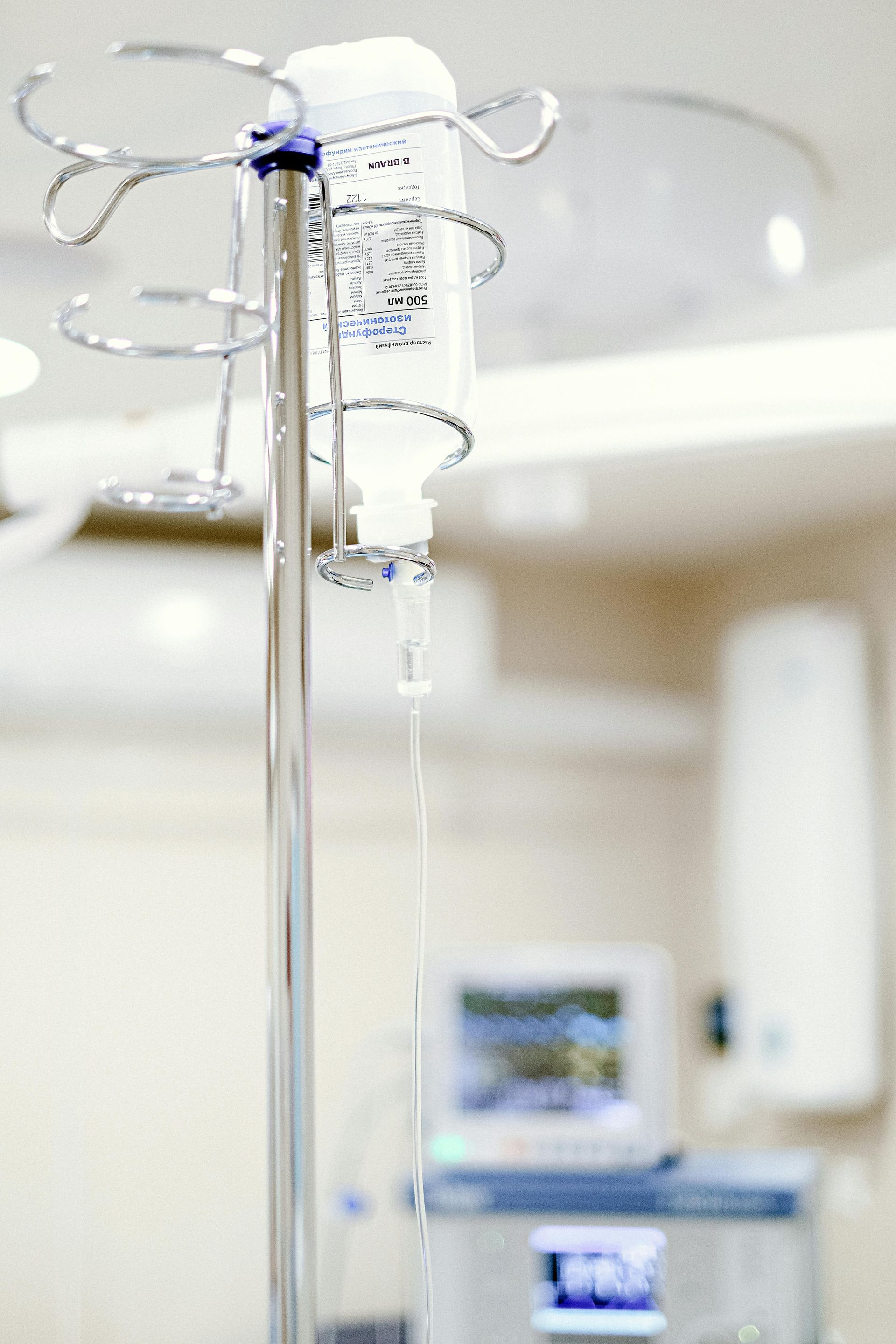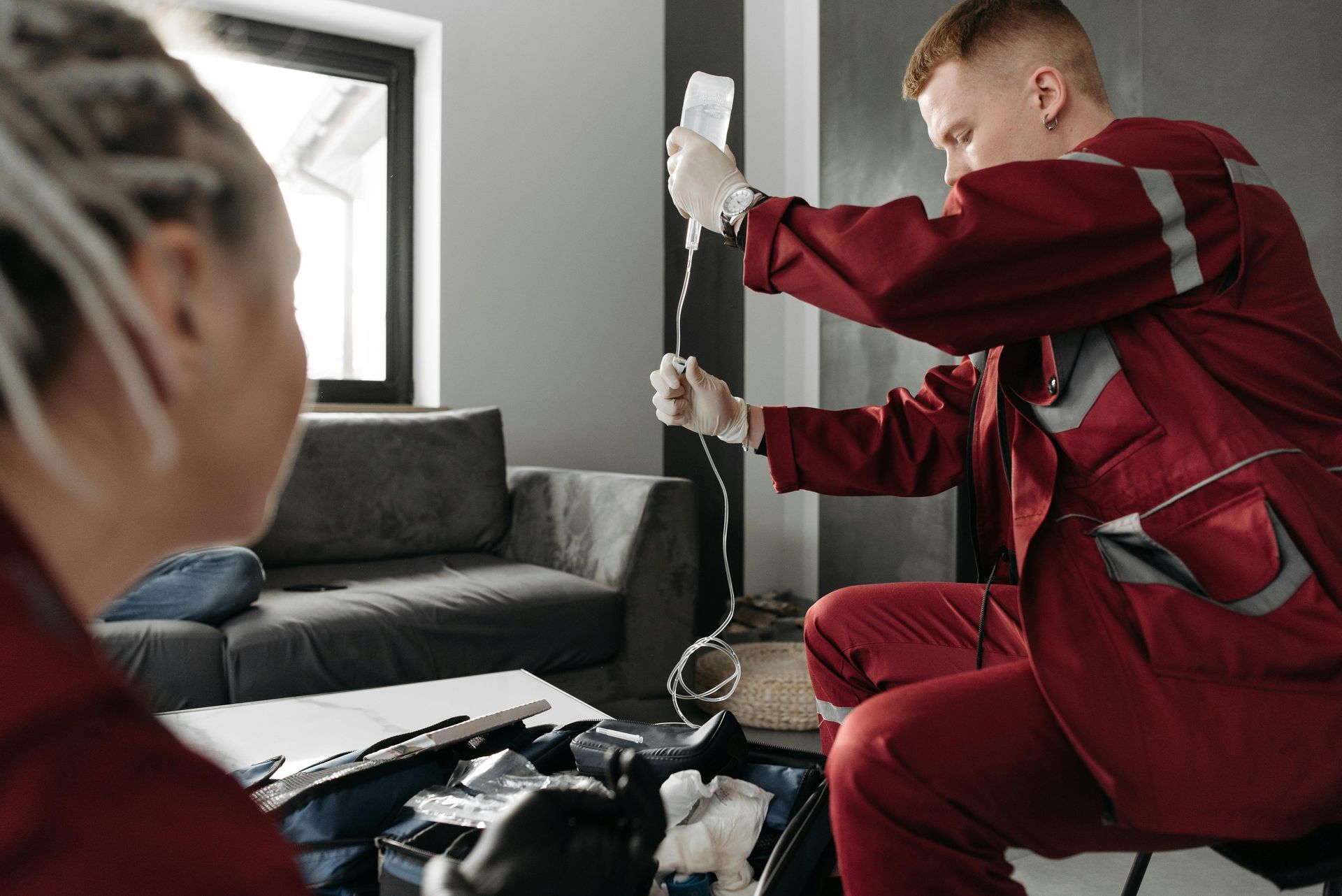Immunoglobulin Therapy Explained Simply

Medically reviewed by Micaela Strevay, FNP-C, PMHNP-BC
Table of Contents
What is Immunoglobulin Therapy?
Immunoglobulin therapy is a medical treatment that uses antibodies from donated human plasma to help people with immune system problems. This life-saving therapy can either boost a weak immune system or calm down an overactive one that's attacking the body.
Key Facts About Immunoglobulin Therapy:
- What it is: Concentrated antibodies from thousands of healthy plasma donors
- How it's given: Through a vein (IVIG) or under the skin (SCIG)
- Treatment time: 2-4 hours for IV infusions, typically every 3-4 weeks
- Common uses: Immune deficiencies, autoimmune disorders, neurological conditions
- Success rate: Fewer than 5% of patients experience serious side effects
If you're one of the thousands of people living with an immune system disorder, you might feel overwhelmed by treatment options. The good news is that immunoglobulin therapy has been safely used for over 40 years and continues to improve lives every day.
This treatment works like giving your immune system "backup workers" - imagine your body's defenses getting extra help during a busy time. For some patients, it replaces missing antibodies. For others, it helps stop the immune system from attacking healthy tissues.
I'm Joseph Lopez AZIVM, and through my work with mobile IV therapy services, I've seen how intravenous treatments can transform patient care and quality of life. My experience with immunoglobulin therapy has shown me the importance of making complex medical treatments accessible and understandable for everyone.

Immunoglobulin therapy terms at a glance:
What is Immunoglobulin Therapy and What Does It Treat?
Immunoglobulin therapy is concentrated antibodies collected from thousands of healthy plasma donors. Those antibodies (mostly Immunoglobulin G, or IgG) are purified, safety-tested, and used as medicine when your own immune system is either too weak or too aggressive.

What Is It Made From?
- Plasma—the liquid part of blood—contains natural antibodies.
- Roughly 10,000 donors are pooled for each batch, giving a broad mix of protective IgG.
- Plasma goes through several viral-inactivation and purification steps, yielding a product that is 95-98 % pure IgG . The process is so stringent that no HIV transmission has ever been recorded with modern.
Conditions Treated (Sampling)
- Primary immunodeficiencies such as CVID, X-linked agammaglobulinemia, and specific antibody deficiency.
- Autoimmune & inflammatory disorders : Guillain-Barré syndrome, CIDP, Myasthenia gravis, Dermatomyositis, Immune Thrombocytopenia (ITP), Kawasaki disease.
- Secondary immunodeficiencies related to CLL, multiple myeloma, pediatric HIV, and post-transplant recovery.
For many, the therapy means fewer infections, faster recovery, and real day-to-day freedom.
How Immunoglobulin Therapy Works with Your Immune System
The same bottle of medicine can add antibodies when you do not have enough or dial-down inflammation when you have too much.

Strengthening a Weak Immune System (Replacement Therapy)
- Typical dose: 400–600 mg/kg every 3–4 weeks .
- Goal trough IgG level: > 500 mg/dL (1,000 mg/dL offers five-fold less pneumonia risk).
- Results: far fewer infections, hospitalizations, and antibiotics.
Calming an Overactive Immune System (Immunomodulation)
- Higher dose: 1,000–3,000 mg/kg given over several days.
- Mechanisms: saturates Fc receptors, neutralizes auto-antibodies, tempers inflammatory cytokines, and damps the complement cascade.
- Rapid effects: platelets rise within 24–48 h in ITP; nerve inflammation eases within weeks in CIDP.
In short, IVIG/SCIG acts like a smart “thermostat” for immunity—raising or lowering activity where needed.
Types of Administration: IVIG vs. SCIG
Both routes deliver the same medicine; the choice depends on lifestyle, veins, and dose needs.
Intravenous Immunoglobulin (IVIG)
- Facility-based infusion every 3–4 weeks .
- Session length 2–4 h ; rapid peak levels.
- Good for high doses or patients who prefer a single monthly visit.
Subcutaneous Immunoglobulin (SCIG)
- Self-administered daily to weekly at home.
- Smaller volumes through tiny needles; session 1–2 h .
- Produces steadier IgG levels and avoids IV access problems.
| Factor | IVIG | SCIG |
|---|---|---|
| Setting | Clinic/infusion center | Home/anywhere |
| Frequency | Monthly | Daily-weekly |
| Peak/valley effect | Higher swings | Steady levels |
| Common reactions | Headache, chills | Local redness |
Patients often switch methods as life circumstances change.
The Infusion Process: What to Expect

Preparing
- Drink plenty of water the day before and morning of treatment.
- Take any ordered pre-meds (acetaminophen, antihistamine) 30–60 min prior.
- Wear loose layers and bring entertainment.
During IVIG
- Vital signs and weight recorded.
- IV started—numbing spray if needed.
- Infusion begins slowly ( 0.5–1 mL/kg/h ), then ramps to 3–6 mL/kg/h if tolerated.
- Nurse checks vitals periodically; whole visit lasts 2–4 h .
- Short observation afterward, then you go home and take it easy.
Most patients find the second visit far less intimidating because they know the routine.
Benefits vs. Potential Side Effects

Why Patients Choose It
- Primary immunodeficiency: infections drop dramatically; many return to work or school.
- Autoimmune disorders: fast platelet rise in ITP, better muscle strength in myasthenia, steroid-sparing.
- Therapy supports immunity instead of suppressing it.
Possible Side Effects
- Common (3–15 %): headache, mild fever, chills, fatigue—usually managed by slower rate, hydration, and pre-meds.
- Rare but urgent: severe headache with neck stiffness (aseptic meningitis), leg swelling or chest pain (clot), dark urine/yellow skin (kidney/hemolysis).
Call your provider or 911 for any serious symptom; report reactions through FDA MedWatch. With modern products, serious complications occur in < 5 % of patients.
Frequently Asked Questions about Immunoglobulin Therapy
How much does it cost?
Price hinges on weight, dose, product, and setting. U.S. totals can reach $30,000–$100,000+ per year , but most insurance plans (including Medicare B for approved diagnoses) cover medically necessary therapy. Manufacturer copay programs can trim out-of-pocket costs.
Are there supply issues?
Yes. Treatment relies on human plasma; each batch uses donations from about 10,000 people . Demand keeps climbing faster than donation rates, so occasional shortages and scheduling delays happen worldwide.
How fast will I notice results?
- ITP: platelet bump in 24–48 h.
- Primary immunodeficiency: fewer infections within 4–6 weeks.
- Autoimmune/neurologic disorders: several doses (1–3 months) for maximum benefit.
Roughly half the infused IgG is metabolized in 3–4 weeks, so staying on schedule is key.
Conclusion
Immunoglobulin therapy has come a long way since those early days of painful injections back in 1952. Today, it stands as one of medicine's most remarkable success stories - a treatment that has literally given life back to hundreds of thousands of people around the world.
If you're reading this because you or someone you love is facing an immune system challenge, I want you to know that you're not alone. Whether it's a primary immunodeficiency that leaves you constantly fighting infections, or an autoimmune condition where your body seems to be working against itself, immunoglobulin therapy offers real hope.
What makes this treatment so special is its incredible versatility. The same therapy that can strengthen a weak immune system can also calm down an overactive one. It's like having a wise mediator who knows exactly what your immune system needs - whether that's backup support or a gentle reminder to settle down.
The numbers speak for themselves: fewer than 5% of patients experience serious side effects , and this therapy has been safely used for over 40 years. The rigorous process from donor screening to viral inactivation means every dose is as safe as possible. That's pretty reassuring when you're making important health decisions.
But here's what really matters - immunoglobulin therapy isn't just about medical statistics. It's about children being able to go to school without their parents worrying about every sniffle. It's about adults returning to work, traveling, and living full lives. It's about families having hope for the future instead of fear.
The key to success lies in finding the right approach for you. The choice between IVIG and SCIG , your dosing schedule, and even which specific product works best - these should all be decisions you make together with your healthcare team. Your lifestyle, your comfort level, and your individual response all matter.
As someone who works in mobile IV therapy here in Arizona, I've seen how bringing treatment directly to patients can transform their healthcare experience. While we at AZ IV Medics focus on mobile vitamin and hydration IV therapy services, I understand that all forms of intravenous treatment play crucial roles in helping people feel their best.
Our experience delivering personalized IV treatments to homes, offices, and hotels throughout Phoenix, Scottsdale, Mesa, Tucson, and Flagstaff has shown us the power of convenient, professional healthcare. We believe that getting the treatment you need shouldn't add stress to your life - it should make life easier.
If you're considering immunoglobulin therapy , take your time to understand your options. Ask questions, advocate for yourself, and remember that this treatment has helped countless people reclaim their health and happiness. With proper care and monitoring, it could be the key to opening up a healthier, more active future for you too.
For those interested in other forms of IV wellness therapy that can support your overall health journey, we invite you to explore our mobile IV wellness services and find how convenient, professional IV treatment can fit into your wellness routine.





